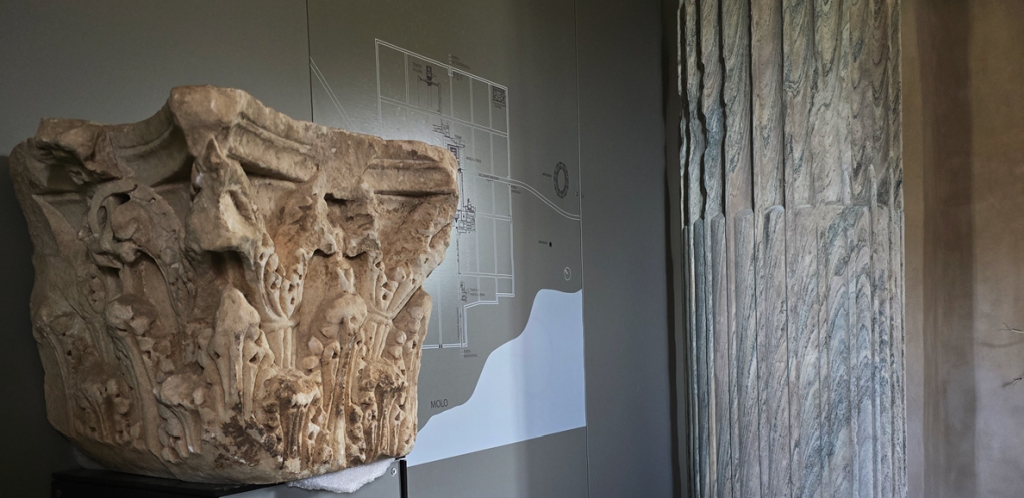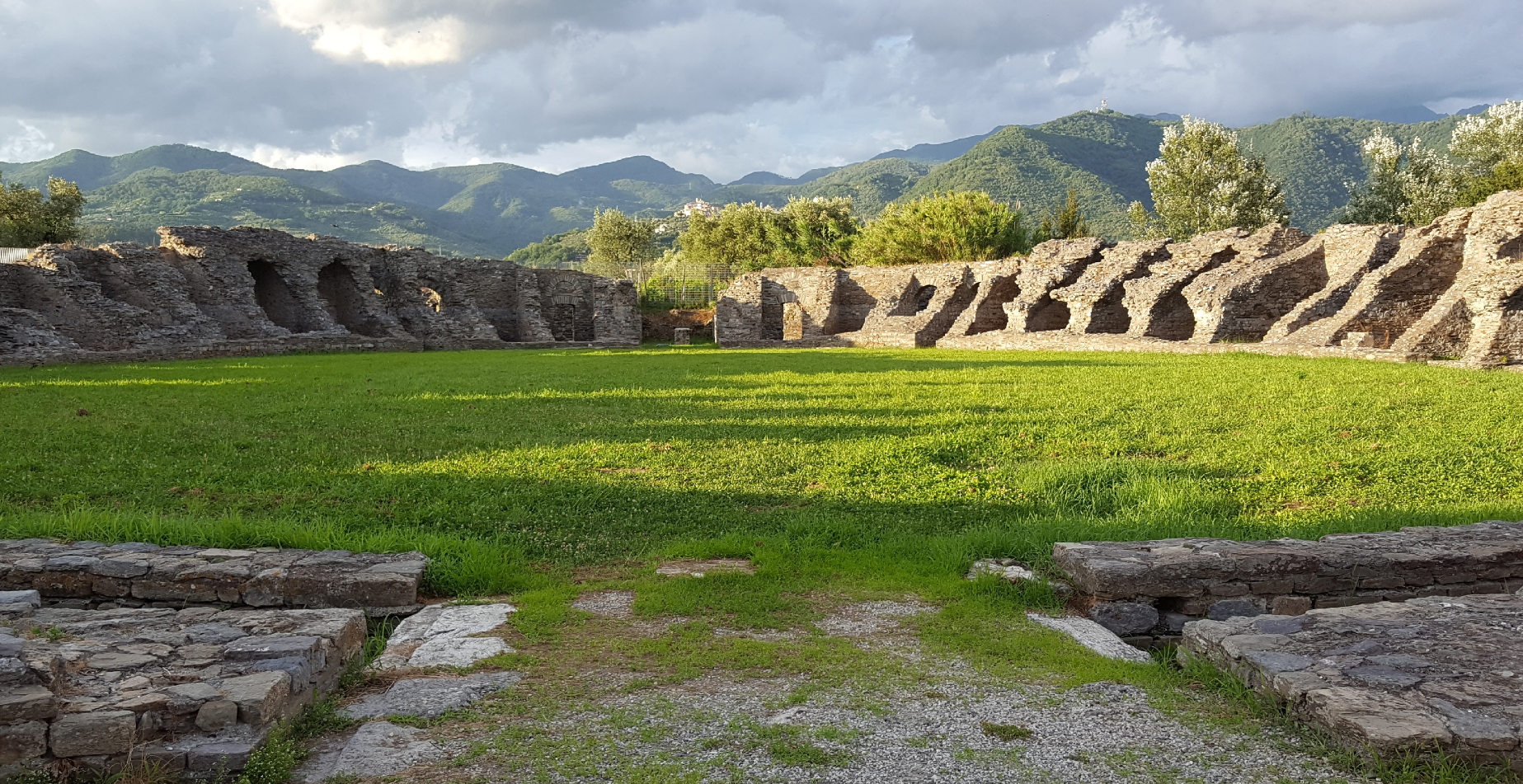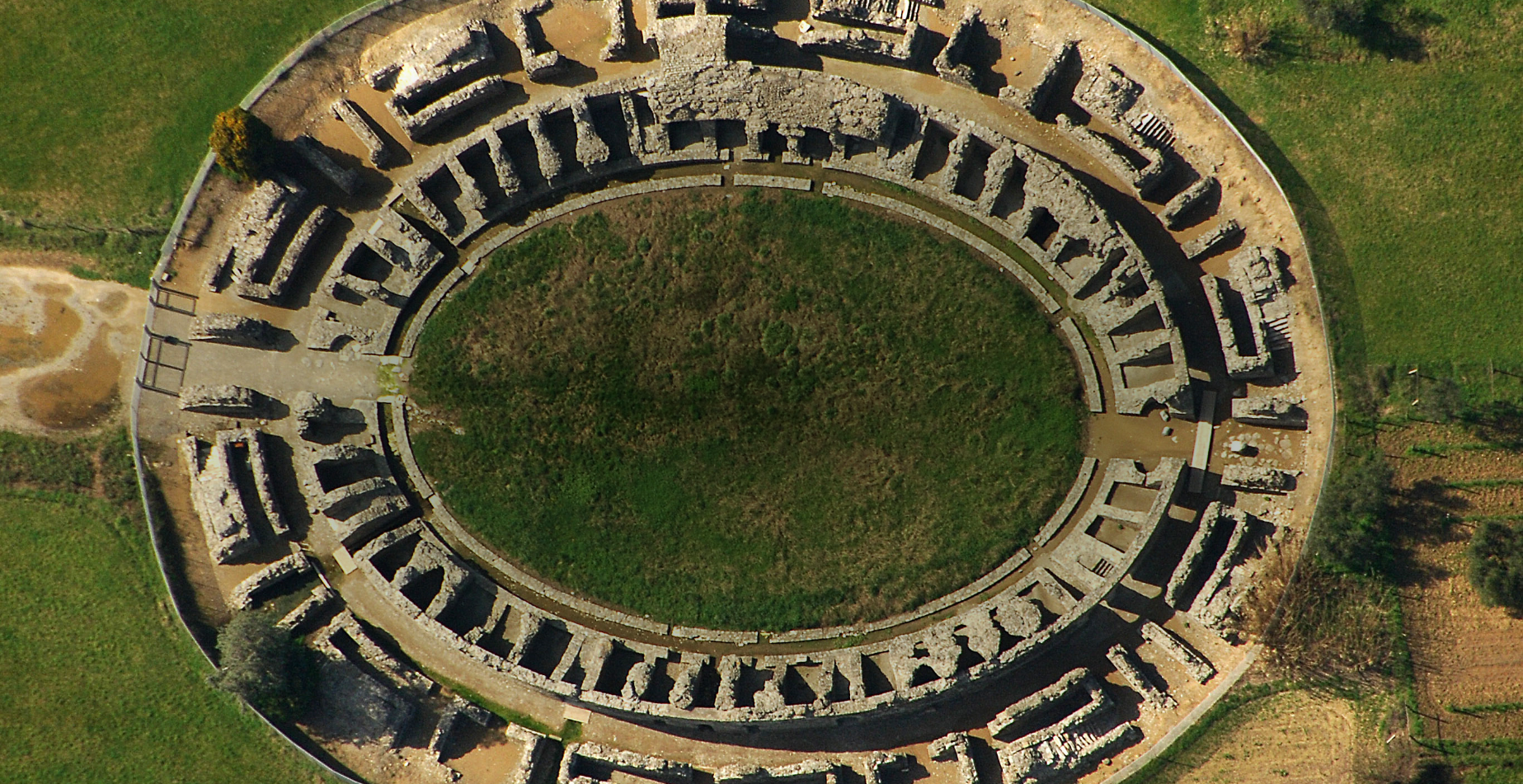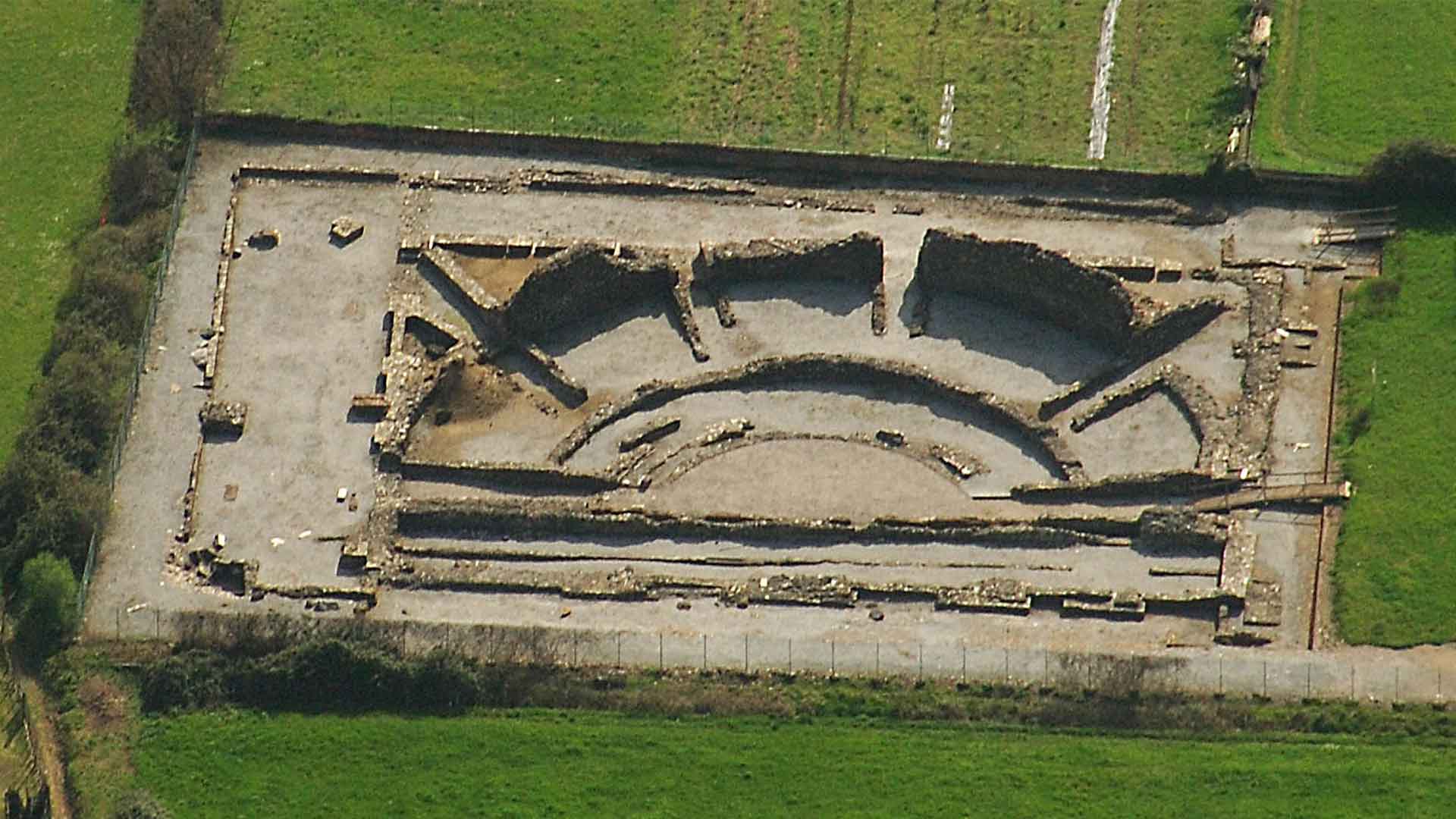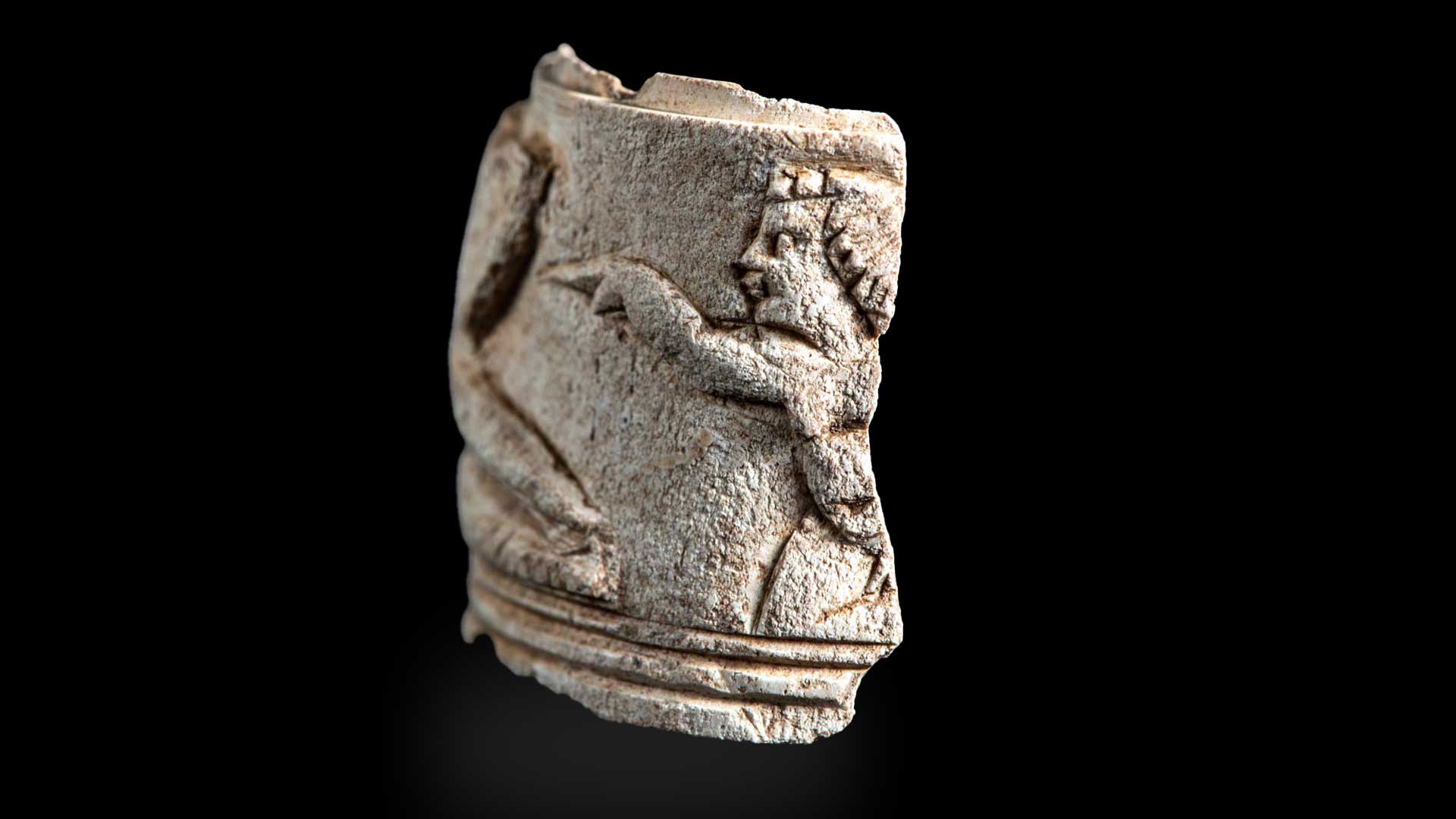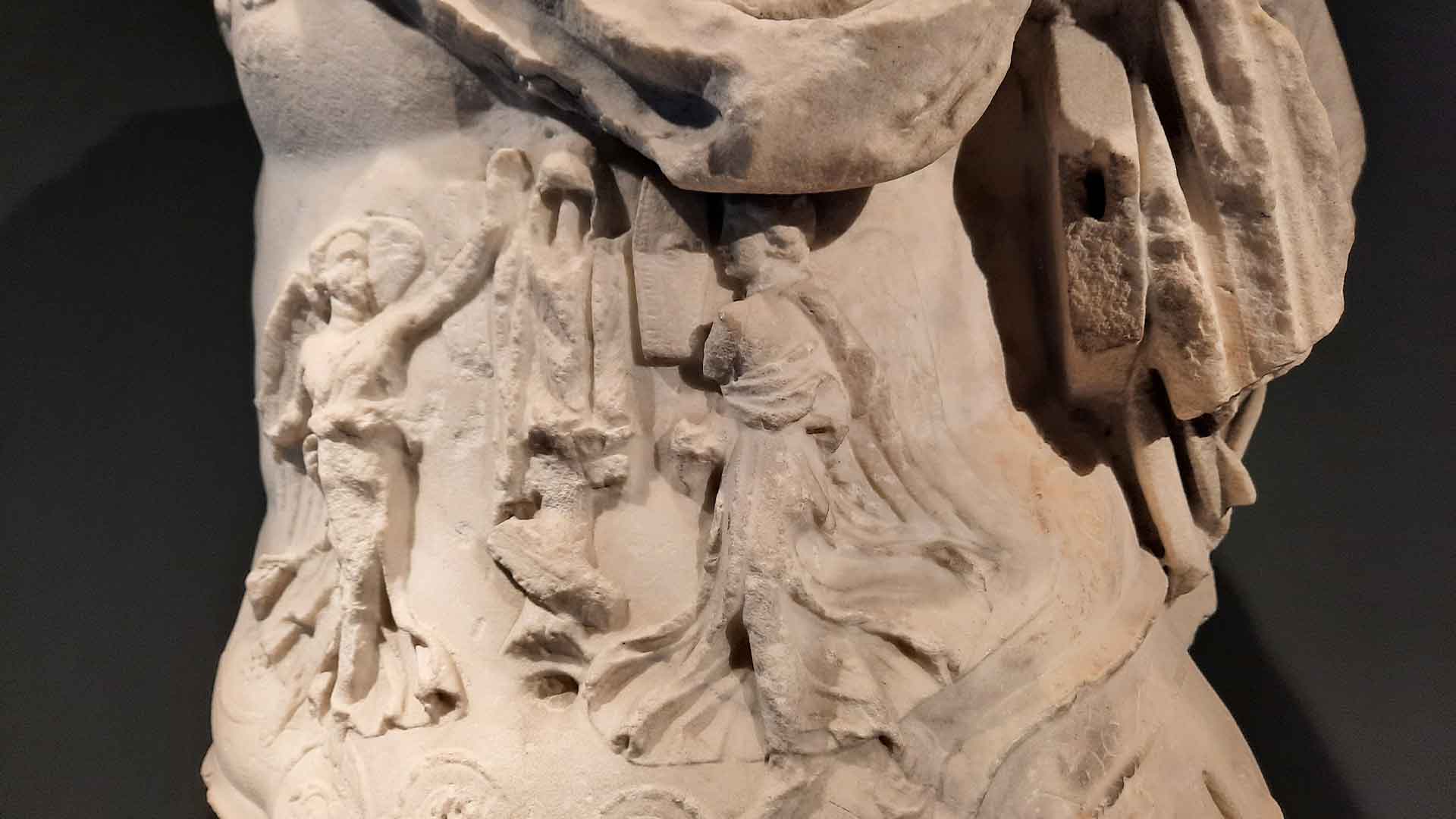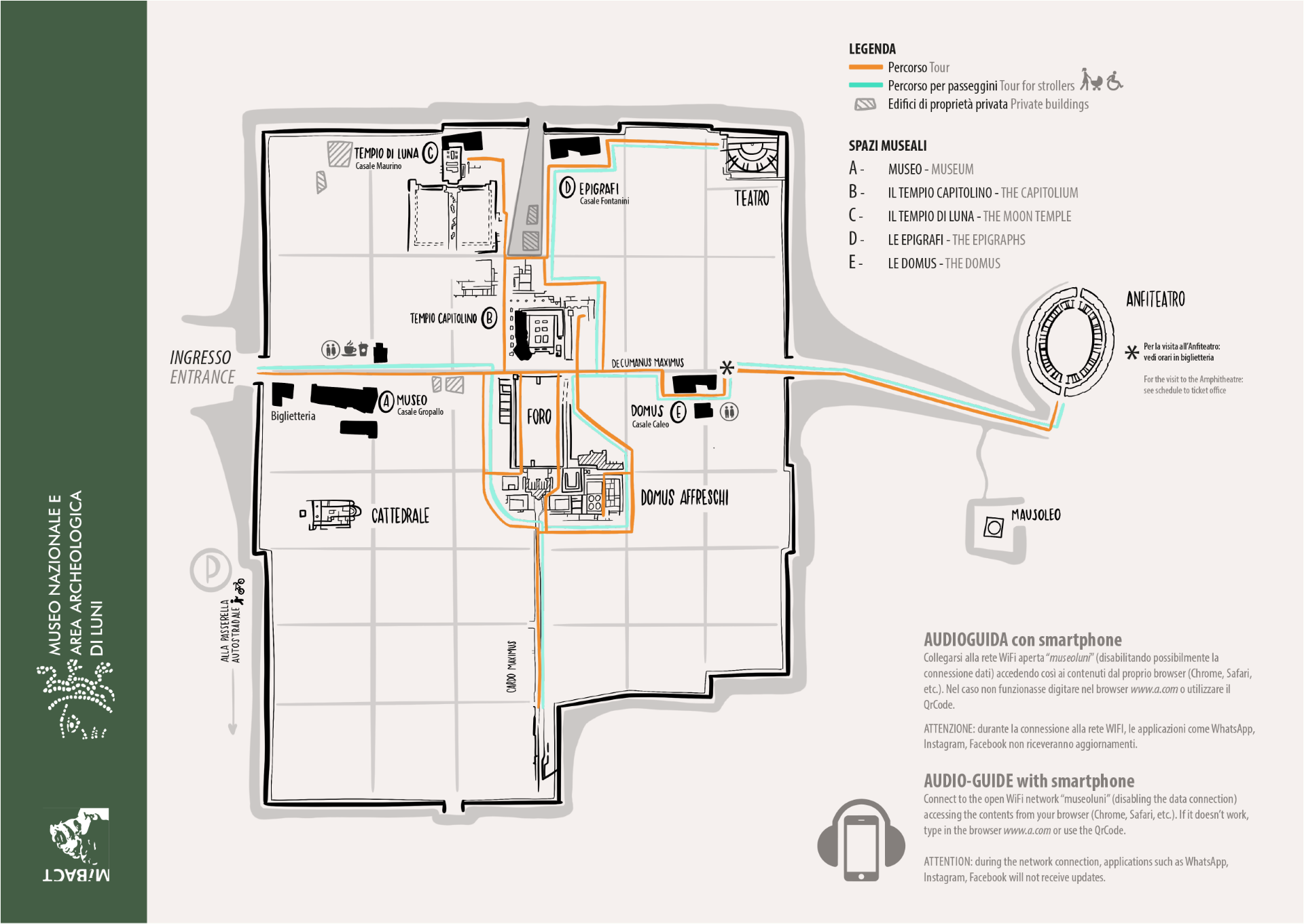It was only in the 19th century that excavations began, leading to the discovery of marble statuary groups of exceptional importance, which at the time were incorporated into the Royal Collections of Turin.
Until the early 20th century, archaeological initiatives were mainly private, led by figures such as Marquis Tomaso Gropallo, Marquis Angelo Remedi, and Carlo Fabbricotti, who were responsible for the first investigations and for creating private collections of artefacts from Luni. These important collections are now preserved in various museums, including the "Ubaldo Formentini" Civic Archaeological Museum in La Spezia and the National Archaeological Museum in Florence.
The construction of the National Archaeological Museum within the archaeological area in 1964 provided the opportunity to display the finds at their original site.
In the following decades, the interventions of the Archaeological Superintendency of Liguria focused on acquiring land and transforming the site into a museum, in order to enhance public understanding of Luni’s historical value and to restore the image of the ancient city — from its founding as a Roman colony in 177 BC to its role as a bishopric until 1204. Between 1991 and 2004, thematic sections were set up inside the rural buildings within the archaeological area.
Today, the Museum is housed in the Casale Benettini Gropallo, where a new exhibition layout was inaugurated on May 29, 2025.
THE NEW MUSEUM EXHIBITION
The new museum is organized over two floors, each offering a distinct thematic approach.
The ground floor focuses on the city’s connection to Apuan marble, showcasing how this precious material was extensively used to give Luna a monumental character. Marble featured prominently in architecture, statuary, and both public and private buildings. The exhibition displays recent archaeological finds alongside some already well-known pieces, such as the dedicatory base to the goddess Luna, discovered in her temple, the renowned “Ocean” mosaic, and the corridor mosaic from the same domus, featuring an image of Medusa, which inspired the museum’s logo.
A small room is dedicated to inscriptions carved in marble, and the floor concludes with a video room featuring two screens that present custom-made films and historical documentaries from the Istituto Luce, all focusing once again on the significance of marble.
The upper floor presents a chronological narrative of Luna’s history. It begins with archaeological evidence from the region that predates the founding of the Roman colony, including prehistoric tools made of flint, obsidian, and limestone. Two funerary assemblages uncovered in the Ligurian necropolis of Ameglia (Cafaggio locality) are also on display, along with a selection of Etruscan pottery, notably bucchero ware, highlighting early human presence in the area and its openness to cultural and commercial exchange.
The exhibition then moves on to the first phase of the Roman colony, founded in 177 BC, displaying artefacts from the Capitoline temple—dedicated to Jupiter, Juno, and Minerva—as well as from the temple of the goddess Luna.
This is followed by the Imperial period, highlighting the complexity of life in Luna at the time. This phase includes the construction of new monuments and the renovation of earlier ones, especially during the first 50 years of the 1st century AD, a period closely linked to the growing exploitation of marble quarries that began under Emperor Augustus. Artefacts reflecting everyday life are also presented, shedding light on economic activities, religion, funerary practices, and other aspects of daily existence.
The final section explores the major political and cultural transformations following the fall of the Roman Empire. Luna became the capital of the Provincia Maritima Italorum under Byzantine control, and was later absorbed into Lombard territory. A significant transformation occurred with the spread of Christianity, leading to the establishment of Luna as a bishopric with authority over a vast diocese. Most archaeological evidence from the city’s later phases comes from the early Christian basilica, later the Cathedral, which became a pilgrimage destination during the Carolingian period and a stop along the Via Francigena.
The city’s history effectively comes to an end around 1200, when the episcopal seat was relocated due to changing environmental conditions and the silting up of the harbour, a crucial element in Luna’s life since its founding.
THE PROJECT AND EXHIBITION DESIGN
The scientific curators of the museum exhibition are Antonella Traverso and Marcella Mancusi. The exhibition design was curated by Giovanni Tortelli of GTRF – Giovanni Tortelli Roberto Frassoni Architetti Associati.
The Museum and Archaeological Area of Luni is a site of the Italian Ministry of Culture, managed by the Regional Directorate of National Museums of Liguria
The Museum and Archaeological Area of Luni is a site of the Italian Ministry of Culture, managed by the Regional Directorate of National Museums of Liguria




